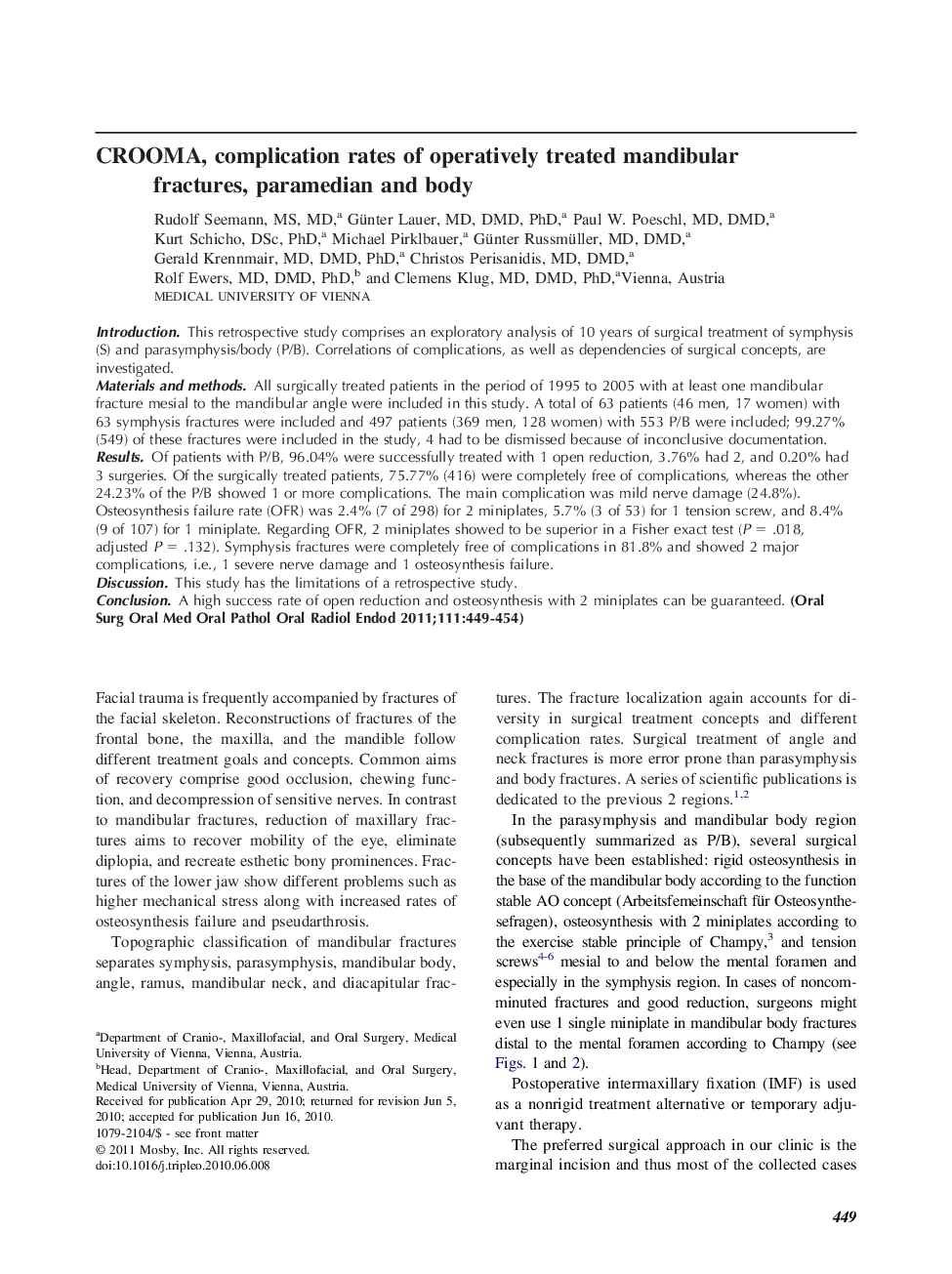| Article ID | Journal | Published Year | Pages | File Type |
|---|---|---|---|---|
| 3167020 | Oral Surgery, Oral Medicine, Oral Pathology, Oral Radiology, and Endodontology | 2011 | 6 Pages |
IntroductionThis retrospective study comprises an exploratory analysis of 10 years of surgical treatment of symphysis (S) and parasymphysis/body (P/B). Correlations of complications, as well as dependencies of surgical concepts, are investigated.Materials and methodsAll surgically treated patients in the period of 1995 to 2005 with at least one mandibular fracture mesial to the mandibular angle were included in this study. A total of 63 patients (46 men, 17 women) with 63 symphysis fractures were included and 497 patients (369 men, 128 women) with 553 P/B were included; 99.27% (549) of these fractures were included in the study, 4 had to be dismissed because of inconclusive documentation.ResultsOf patients with P/B, 96.04% were successfully treated with 1 open reduction, 3.76% had 2, and 0.20% had 3 surgeries. Of the surgically treated patients, 75.77% (416) were completely free of complications, whereas the other 24.23% of the P/B showed 1 or more complications. The main complication was mild nerve damage (24.8%). Osteosynthesis failure rate (OFR) was 2.4% (7 of 298) for 2 miniplates, 5.7% (3 of 53) for 1 tension screw, and 8.4% (9 of 107) for 1 miniplate. Regarding OFR, 2 miniplates showed to be superior in a Fisher exact test (P = .018, adjusted P = .132). Symphysis fractures were completely free of complications in 81.8% and showed 2 major complications, i.e., 1 severe nerve damage and 1 osteosynthesis failure.DiscussionThis study has the limitations of a retrospective study.ConclusionA high success rate of open reduction and osteosynthesis with 2 miniplates can be guaranteed.
